Racing time to characterize a community
Dr. Mitchell A. Byrd – Bald Eagle Recovery
March 26, 2014Camellia Returns to LagoMar-Atwoodtown in Va Beach 3/27
March 28, 2014
They exist as a world apart – utterly different from the familiar uplands just 100 meters away. Walking through them has the feel of a Mid-west prairie or west-Texas grassland. With only the sound of water and wind, they feel empty and deserted. But they are not. The winter marshes of the Chesapeake Bay and surrounding mid-Atlantic coast support a unique community of birds. A community that lives on borrowed time in the path of rising seas.
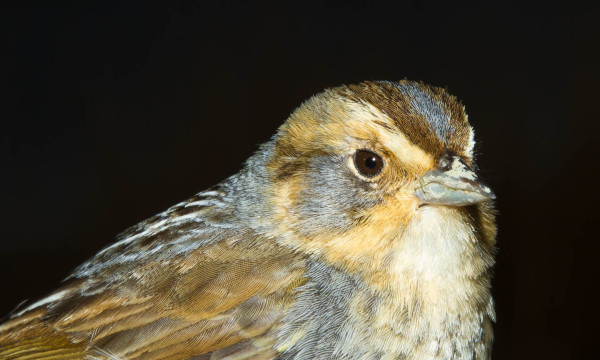
Interior form of the Nelson’s sparrow captured in winter salt marsh along the western shore of the Chesapeake Bay. Photo by Bryan Watts.
For three months during the winter of 2013-2014, a team of CCB biologists led by Fletcher Smith have conducted more than 300 transect counts across the Coastal Plain in an attempt to sample the winter saltmarsh bird community. With funding from the Virginia Department of Game & Inland Fisheries, the project will be the first to estimate population sizes supported by regional marshlands. The estimates will serve as benchmarks or stakes in time against which to compare future population levels. Most abundant species include saltmarsh sparrow, Nelson’s sparrow, seaside sparrow, and marsh wren. Other species include sora, clapper rail, Virginia rail, swamp sparrow, savannah sparrow, short-eared owl, northern harrier and American bittern.
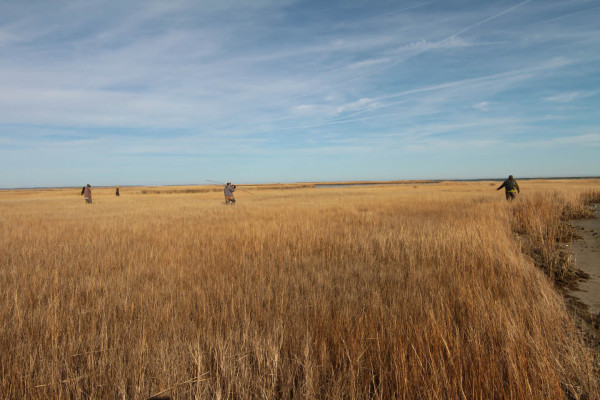
Marsh crew dragging a transect within a marsh patch in the Chesapeake Bay. Fletcher Smith (far rt) and Laura Duval (far lft) drag the weight rope through marsh while Zak Poulton (middle rt) and Chance Hines (middle lft) follow behind to spot. Photo by Bryan Watts.
Despite the fact that they are very specialized, threatened, and essentially in our backyards, we know surprisingly little about these birds. Avoided by most people, marshes are not particularly inviting to the birding public. Even for those who venture into the marsh, they are only rewarded with occasional glimpses of a brown flash along the top of the marsh grass. Not much of a trophy for a long slog through the marsh.
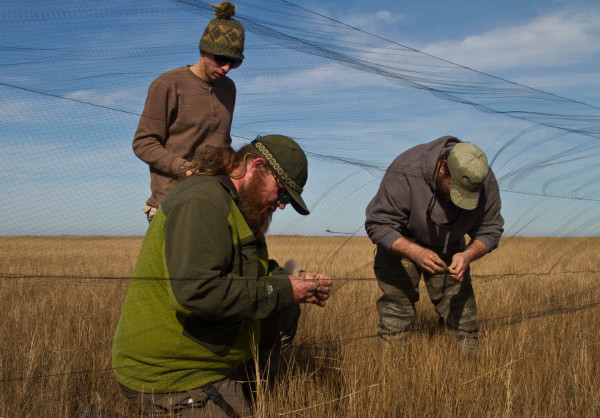
Fletcher Smith and Zak Poulton extract birds from mist net while Chance Hines looks on. Photo by Bryan Watts.
Unlike many birds that seek safety in numbers during winter, the primary strategy of these species is to spread out and get lost in the uniform monotony of grass. Concealment is the key. They stay hidden within the vegetation and can be very reluctant to flush, a characteristic that frustrates many birders and makes it challenging for biologists to estimate populations.
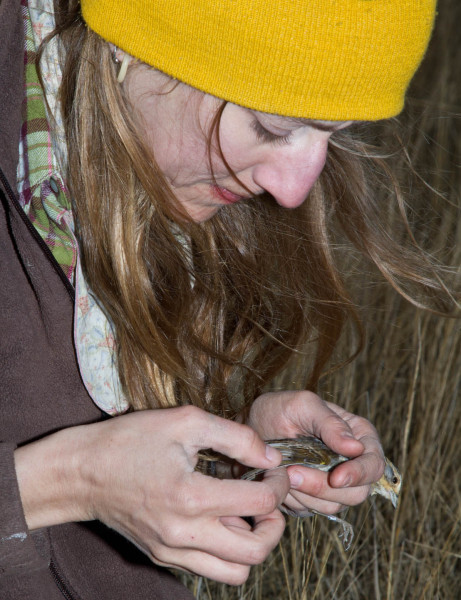
Laura Duval inspects interior Nelson’s sparrow while banding. Photo by Bryan Watts.
A unique, rope-drag transect approach was used to collect bird density information within winter marsh patches. Two biologists drug a weighted rope through the marsh, flushing birds within a standard transect, while two other biologists followed the rope and noted all birds flushed. This technique yields a reliable estimate of bird density that may be used in population projections. The team also used the rope technique to maneuver birds into mist nets for banding.
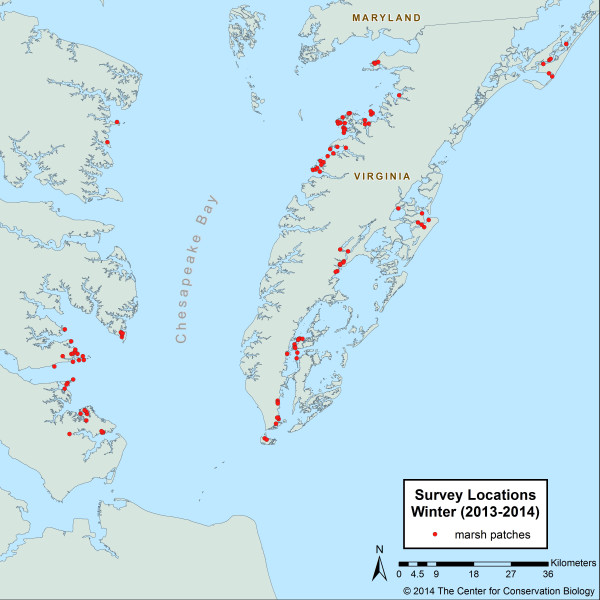
Map of marsh patches used during the winter of 2013-2014 to sample the winter bird community. Map by CCB.
Written by Bryan Watts | bdwatt@wm.edu | (757) 221-2247
March 27, 2014
Click on the gallery images below to learn more about the marsh bird surveys:
[easy_image_gallery]



